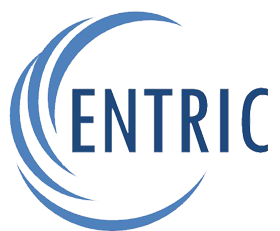The Pros and Cons of Healthcare Chatbots

The Black Box problem also poses a concern to patient autonomy by potentially undermining the shared decision-making between physicians and patients [99]. The chatbot’s personalized suggestions are based on algorithms and refined based on the user’s past responses. The removal of options may slowly reduce the patient’s awareness of alternatives and interfere with free choice [100]. Chatbots have been implemented in remote patient monitoring for postoperative care and follow-ups. The health care sector is among the most overwhelmed by those needing continued support outside hospital settings, as most patients newly diagnosed with cancer are aged ≥65 years [72]. The integration of this application would improve patients’ quality of life and relieve the burden on health care providers through better disease management, reducing the cost of visits and allowing timely follow-ups.
The current review identified heterogeneity in the tools used to measure the same outcomes and in the research design. For instance, severity of depression was measured using PHQ-9, Beck Depression Inventory II, or Hospital Anxiety and Depression Scale. Further, while some studies assessed outcomes before and after interventions, other studies examined them only after interventions. The field would benefit from future studies using a common set of outcome measures to ease comparison and interpretation of results between studies. Only one study assessed the long-term effectiveness and safety of chatbots, where participants were followed for 12 weeks.
Data availability
However, in general, AI applications such as chatbots function as tools for ensuring that available information in the evidence base is properly considered. COVID-19 screening is considered an ideal application for chatbots because it is a well-structured process that involves asking patients a series of clearly defined questions and determining a risk score (Dennis et al. 2020). For instance, in California, the Occupational Health Services did not have the resources to begin performing thousands of round-the-clock symptom screenings at multiple clinical sites across the state (Judson et al. 2020). To limit face-to-face meetings in health care during the pandemic, chatbots have being used as a conversational interface to answer questions, recommend care options, check symptoms and complete tasks such as booking appointments.
- This judgment was based on a potential for confounding of the effect of intervention in all studies, and it was not clear whether authors in all studies used an appropriate analysis method to control for all confounding domains.
- Given the current status and challenges of cancer care, chatbots will likely be a key player in this field’s continual improvement.
- There were no restrictions regarding study setting, year of publication, and country of publication.
They are aware that some diagnoses may turn out to be wrong or that some of their treatments may not lead to the cures expected. Thus, medical diagnosis and decision-making require ‘prudence’, that is, ‘a mode of reasoning about contingent matters in order to select the best course of action’ (Hariman 2003, p. 5). The prevalence of cancer is increasing along with the number of survivors of cancer, partly because of improved treatment techniques and early detection [77]. A number of these individuals require support after hospitalization or treatment periods. Maintaining autonomy and living in a self-sustaining way within their home environment is especially important for older populations [79]. Implementation of chatbots may address some of these concerns, such as reducing the burden on the health care system and supporting independent living.
Top Health Categories
It revolutionizes the quality of patient experience by attending to your patient’s needs instantly. Since the 1950s, there have been efforts aimed at building models and systematising physician decision-making. For example, in the field of psychology, the so-called framework of ‘script theory’ was ‘used to explain how a physician’s medical diagnostic knowledge is structured for diagnostic problem solving’ (Fischer and Lam 2016, p. 24). According to this theory, ‘the medical expert has an integrated network of prior knowledge that leads to an expected outcome’ (p. 24).
The 36 inaccurate answers receiving a score of 2.0 or lower on the accuracy scale were reevaluated 11 days later, using GPT-3.5 to evaluate improvement over time. Notably, 26 of the 26 answers improved in accuracy, with the median score for the group improving chatbot in healthcare from 2.0 to 4.0. Questions were varied between easy, medium, and hard, as well as a combination of multiple-choice, binary, and descriptive questions. Close-up stock photograph showing a touchscreen monitor being used in an open plan office.
The Pros and Cons of Healthcare Chatbots
It connects your entire tech stack to answer questions, automate repetitive support tasks, and build solutions to any business challenge. Still, they cannot pass the Turing test — an assessment to determine whether or not an AI is sentient. In other words, chatbots are less advanced than some innovative AI solutions, but they’ve come a long way since their introduction.
Easily customize your chatbot to align with your healthcare brand’s visual identity and personality, and then intuitively embed it into your organization’s website or mobile applications with a simple cut and paste. Built with IBM security, scalability, and flexibility built in, watsonx Assistant for Healthcare understands any written language and is designed for safe and secure global deployment. Turn it on today and empower your team to realize the benefits of happier patients and a more efficient, effective healthcare staff—without having to hire a specialist.
